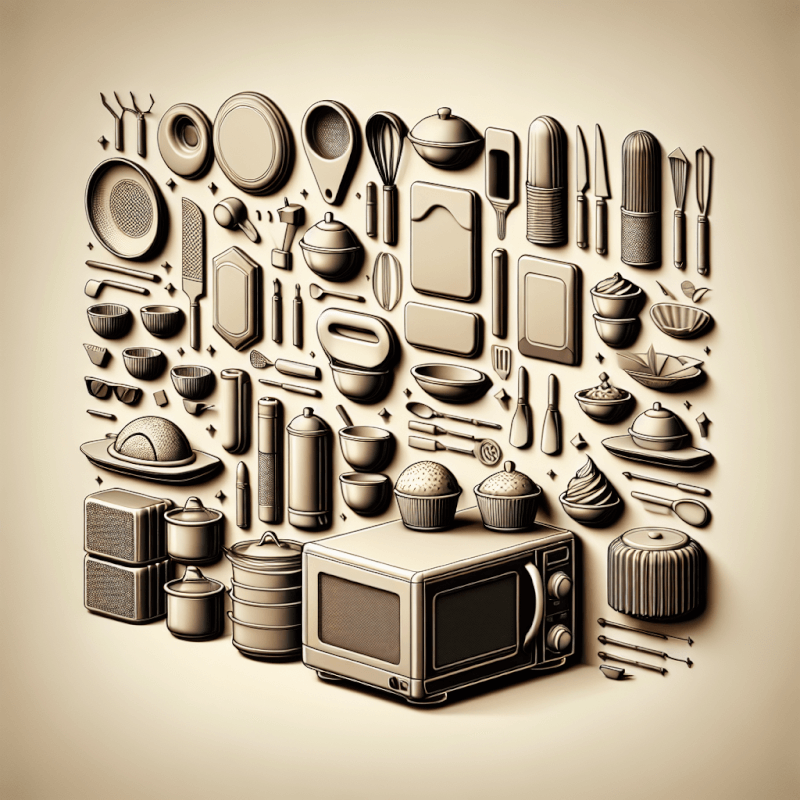Are you tired of using regular bakeware in your convection microwave and not getting the desired results? Look no further! We have just the solution for you – bakeware specifically designed for convection microwaves. With these specially crafted baking pans, you can achieve perfectly cooked and evenly browned treats every time. So say goodbye to burnt edges and uneven cooking, and say hello to perfectly baked goods that will impress your friends and family. Upgrade your baking game with our bakeware for convection microwave and transform your kitchen into a bakery.
What is a convection microwave?
A convection microwave is a versatile kitchen appliance that combines the functions of a traditional microwave and a convection oven. It uses a combination of microwave energy and hot air circulation to cook or heat food quickly and evenly. This appliance is growing in popularity due to its ability to perform a variety of cooking tasks, making it a convenient and efficient option for many households.
Definition
A convection microwave is a type of microwave oven that utilizes convection technology to cook food more evenly and quickly than a traditional microwave. It has a built-in fan and heating element that circulate hot air throughout the oven cavity, providing a more even distribution of heat. This helps to eliminate hot spots and ensures that food is cooked thoroughly and precisely.
How it works
Unlike a conventional microwave, which heats food through a process called dielectric heating (where microwaves penetrate the food and heat it from the inside out), a convection microwave uses a combination of microwave energy and hot air circulation. The microwave element generates microwaves, which heat the food from the inside, while the fan and heating element distribute hot air throughout the oven cavity to cook the food from the outside. This dual heating method allows for faster and more even cooking of a variety of dishes.
Advantages and disadvantages
Using a convection microwave offers several advantages. Firstly, it provides the convenience of both microwave and oven cooking in one appliance, saving space in the kitchen. It allows for faster cooking times compared to traditional ovens, as the combination of microwave energy and convection heat speeds up the cooking process. Additionally, the even heat distribution ensures that food is cooked uniformly, resulting in better texture and flavor.
However, there are a few disadvantages to consider when using a convection microwave. It may require a slightly longer cooking time compared to using a dedicated oven. Some convection microwaves can be more expensive than traditional microwaves, although their versatility and convenience may make up for the higher upfront cost. Finally, the added features and functionality of a convection microwave may require a learning curve to fully utilize and understand.
Factors to consider when choosing bakeware for convection microwave
When choosing bakeware to use with a convection microwave, several factors should be taken into consideration to ensure the best cooking results. These factors include the material of the bakeware, its size and shape, heat resistance, ease of cleaning, and versatility.
Material
The material of the bakeware plays a crucial role in how well it will work in a convection microwave oven. Glass bakeware is a popular choice as it provides even heat distribution and is resistant to temperature changes. It is also microwave-safe and can withstand the high temperatures produced by convection cooking. Silicone bakeware is another convenient option as it is lightweight, flexible, and non-stick. Ceramic bakeware, on the other hand, is aesthetically pleasing and provides excellent heat retention but may not be suitable for use in a microwave. Stainless steel bakeware is durable and conducts heat well but may produce uneven results in a convection microwave.
Size and shape
The size and shape of the bakeware should be considered to ensure proper cooking and optimal use of the convection microwave’s space. The bakeware should fit comfortably in the oven cavity and allow for proper airflow around the food. It is also essential to consider the size and shape of the food being cooked to ensure even cooking.
Heat resistance
Since convection microwaves reach high temperatures during cooking, it is crucial to choose bakeware that is heat resistant and can withstand these temperatures without warping or cracking. Glass and ceramic bakeware are typically more heat resistant than other materials and are excellent choices for use in a convection microwave. It is essential to check the bakeware’s maximum temperature rating to ensure it is compatible with the cooking temperatures of the convection microwave.
Ease of cleaning
Choosing bakeware that is easy to clean is a practical consideration. Non-stick coatings can make cleanup easier, preventing food from sticking to the surface. Dishwasher-safe bakeware is also convenient for effortless cleaning. Additionally, bakeware with smooth surfaces and minimal crevices or seams is easier to clean and maintain.
Versatility
Opting for versatile bakeware allows for a wide range of cooking options and flexibility in the convection microwave. Bakeware that can be used for various cooking tasks, such as baking, roasting, and grilling, can maximize the functionality of the appliance. Consider bakeware sets that come with different sizes and shapes for added versatility.
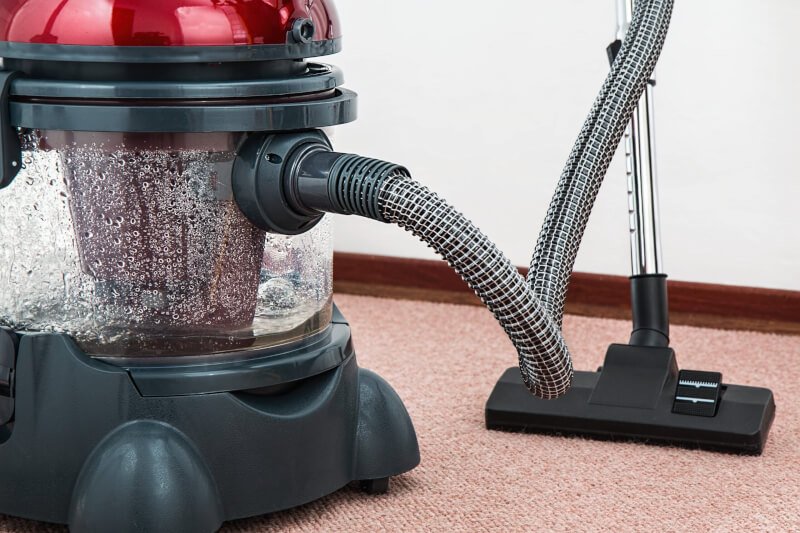
Types of bakeware suitable for convection microwave
When it comes to choosing bakeware for a convection microwave, several options are well-suited for this type of oven.
Glass bakeware
Glass bakeware is a popular choice for convection microwaves due to its versatility and even heat distribution. It is microwave-safe, allowing for efficient microwave cooking, and can also withstand the high temperatures generated by convection cooking. Glass bakeware is available in various shapes and sizes, making it suitable for a wide range of dishes, from casseroles and lasagnas to cakes and pies.
Silicone bakeware
Silicone bakeware has gained popularity in recent years due to its flexibility, non-stick properties, and ease of use. It is microwave-safe and heat resistant, making it suitable for convection microwave cooking. Silicone bakeware is lightweight, easy to clean, and can withstand a wide range of temperatures. It is available in various shapes and sizes, including muffin pans, cake pans, and baking mats, making it a versatile choice for convection microwave cooking.
Ceramic bakeware
Ceramic bakeware is known for its elegant appearance and excellent heat retention properties. However, not all ceramic bakeware is suitable for use in a convection microwave. It is essential to choose ceramic bakeware that is labeled as microwave-safe to avoid any potential issues. Ceramic bakeware is available in a variety of shapes and sizes, including baking dishes, loaf pans, and pie plates.
Stainless steel bakeware
Stainless steel bakeware is durable, conducts heat well, and is commonly used in traditional ovens. However, it may produce uneven results in a convection microwave due to the metal’s ability to reflect microwaves. While not the ideal choice for convection microwave cooking, stainless steel bakeware can still be used for certain dishes, such as roasting pans or baking sheets, where the lack of browning is not a concern.
Recommended bakeware accessories for convection microwave
In addition to choosing the right bakeware, there are several accessories that can enhance your convection microwave cooking experience.
Baking racks and trays
Baking racks and trays are essential accessories for convection microwave cooking. They help promote airflow around the food, allowing for even cooking and browning. Baking racks can be used for roasting meats and vegetables or for cooling baked goods, while baking trays are useful for various dishes, including cookies, pastries, and sheet pan meals.
Silicone mats
Silicone mats, also known as baking mats or pastry mats, are versatile accessories that can be used in a convection microwave. They provide a non-stick surface for baking cookies, bread, or other delicate items. Silicone mats also make cleanup a breeze, as they can be easily wiped clean or placed in the dishwasher.
Oven mitts and gloves
When using a convection microwave, it is important to protect your hands from the heat. Oven mitts and gloves are essential accessories to safely handle hot bakeware and protect against burns. Look for heat-resistant mitts or gloves that provide a secure grip and adequate insulation.
Baking brushes
Baking brushes are handy for applying glazes, oils, or sauces to food being cooked in a convection microwave. Silicone brushes are a good choice, as they are heat-resistant, easy to clean, and will not shed bristles onto your food.
Cooling racks
Cooling racks are useful accessories when baking in a convection microwave, allowing air to circulate around baked goods and preventing them from becoming soggy. They can also be used to elevate foods while broiling or draining excess oil after frying.
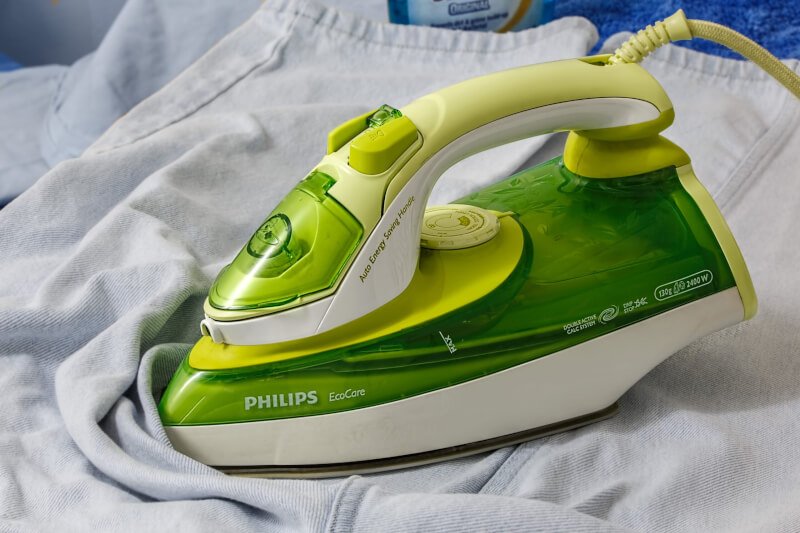
Tips for using bakeware in a convection microwave
To achieve the best results when using bakeware in a convection microwave, consider the following tips:
Preheating the bakeware
Preheating the bakeware before adding the food can help promote even cooking and browning. This is especially important for baked goods like bread or cookies. Preheat the bakeware by placing it in the convection microwave while it is preheating, or by preheating it separately in a traditional oven before transferring it to the convection microwave.
Using the right temperature and time
Follow the recipe instructions for temperature and cooking time, but keep in mind that convection microwaves may cook slightly faster than regular ovens. It is a good practice to reduce the cooking time slightly and monitor the food closely to prevent overcooking.
Proper placement of bakeware
Properly placing the bakeware in the convection microwave can affect the cooking results. Allow space between the bakeware and the walls of the oven cavity to promote airflow and ensure even cooking. Avoid overcrowding the oven by using multiple racks or baking in batches if necessary.
Avoiding overcrowding
Overcrowding the bakeware in a convection microwave can lead to uneven cooking and prolong the cooking time. To ensure proper heat circulation, leave space between the food items and do not stack or overlap them.
Using convection and microwave functions together
Some convection microwaves allow for the simultaneous use of the convection and microwave functions. This can be beneficial for certain dishes that require a combination of quick cooking and browning. Follow the manufacturer’s instructions for using both functions together and adjust the cooking time and temperature accordingly.
Cleaning and maintenance of bakeware for convection microwave
Proper cleaning and maintenance of bakeware used in a convection microwave can prolong its lifespan and ensure optimal performance.
Dishwasher safe vs. hand washing
Check the manufacturer’s instructions to determine if the bakeware is dishwasher safe. Some bakeware may have non-stick coatings or delicate finishes that require hand washing. If dishwasher safe, place the bakeware in the dishwasher with other dishwasher-safe items, preferably on the top rack to prevent direct heat exposure.
Removing stubborn stains
If bakeware develops stubborn stains or food residue, soaking it in warm soapy water for a few minutes can help loosen the debris. Use a non-abrasive sponge or brush to gently scrub away the stain. For baked-on grease or food, a baking soda paste applied to the stain and left to sit for a while before scrubbing can be effective.
Avoiding abrasive cleaners
Avoid using abrasive cleaners, scouring pads, or harsh chemicals on bakeware, as they can damage the surface and make it less effective. Opt for non-abrasive cleaning agents and tools to preserve the integrity of the bakeware.
Proper storage of bakeware
Store the bakeware in a clean, dry place to prevent moisture build-up and damage. Stack the bakeware carefully to avoid scratching or chipping. If possible, store the bakeware with the matching lids to prevent any accidental damage or misplacement.
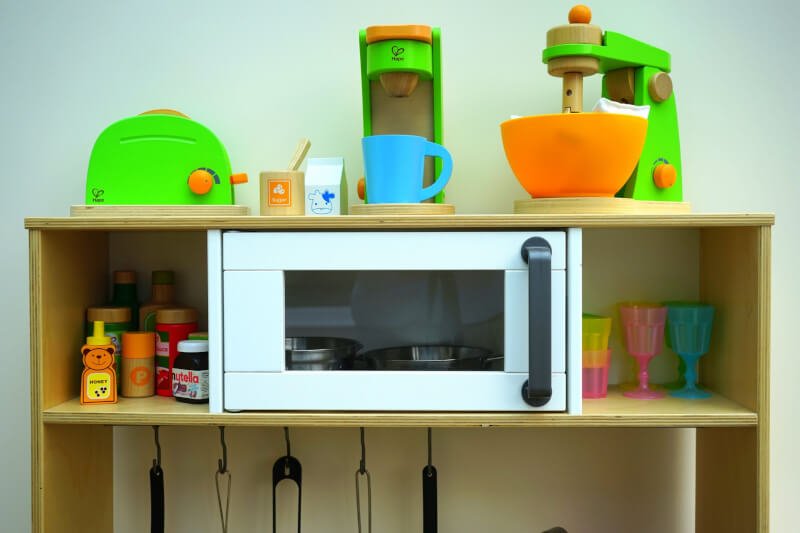
Recipes and cooking ideas using bakeware in a convection microwave
The versatility of bakeware in a convection microwave opens up a world of cooking possibilities. Here are some recipe ideas to inspire your culinary adventures:
Roasting vegetables
Roasting vegetables in a convection microwave can yield crispy, flavorful results. Toss your favorite vegetables, such as carrots, broccoli, or potatoes, with olive oil, salt, and pepper. Spread them on a baking sheet and roast at a high temperature to achieve a delicious caramelized exterior while keeping the interior tender.
Baking cookies and brownies
Baking cookies and brownies in a convection microwave is quick and convenient. Use a silicone mat or parchment paper to line a baking sheet. Prepare your favorite cookie or brownie dough and portion it onto the sheet. Bake at the recommended temperature and adjust the cooking time accordingly for a chewy or crispy texture.
Making pizza and bread
A convection microwave is excellent for making homemade pizza and bread. Using a pizza stone or baking sheet, preheat it in the convection microwave. Prepare your pizza dough or bread dough and add your desired toppings or seasonings. Slide the pizza onto the preheated stone or sheet and bake until the crust is golden and the cheese is bubbly. The convection function helps achieve a crispy crust while cooking the toppings evenly.
Grilling and broiling meat
Grilling and broiling meat can be done in a convection microwave by utilizing a broiling rack or grilling tray. Season your preferred meat, such as steaks or chicken breasts, with your chosen marinade or spices. Place the meat on the broiling rack or grilling tray and set the convection microwave to the appropriate function. Monitor the cooking closely to ensure the meat reaches your desired doneness.
Preparing casseroles and lasagna
Casseroles and lasagnas are perfect dishes to prepare in a convection microwave. Layer your ingredients, such as pasta, sauce, vegetables, and cheese, in a baking dish. Cover the dish with a lid or aluminum foil and place it in the convection microwave. Adjust the cooking time and temperature to ensure thorough cooking and melted cheese on top.
Common issues and troubleshooting with bakeware in a convection microwave
While using bakeware in a convection microwave can be a straightforward and enjoyable experience, there are some common issues that may arise. Here are some troubleshooting tips to overcome these issues:
Uneven baking
If your food is baking unevenly, ensure that you are properly preheating the bakeware and that there is enough space around it for proper air circulation. Rotate the bakeware halfway through the cooking process to promote even cooking. If the issue persists, consider adjusting the temperature or the baking time.
Burning or overcooking
Burning or overcooking can occur if the temperature or cooking time is too high. Be sure to follow the recipe instructions carefully and adjust the temperature or cooking time as needed. Additionally, if using dark-colored bakeware, consider reducing the temperature slightly to prevent burning.
Excessive moisture
Excessive moisture can occur if the bakeware is overcrowded or if the food is not properly drained before cooking. Ensure that there is enough space between the food items and use a slotted baking tray or rack to promote airflow and drainage during cooking.
Food sticking to the bakeware
To prevent food from sticking to the bakeware, ensure that it is properly greased or lined with parchment paper or a silicone mat. Non-stick bakeware can also help reduce sticking. If food does stick, allow the bakeware to cool slightly and then soak it in warm, soapy water to loosen the food residue before washing.
Inconsistent browning
Inconsistent browning can occur if the bakeware is not properly preheated or if there are hot spots within the convection microwave. Ensure that the bakeware is preheated before adding the food and consider rotating the bakeware during cooking to promote even browning.
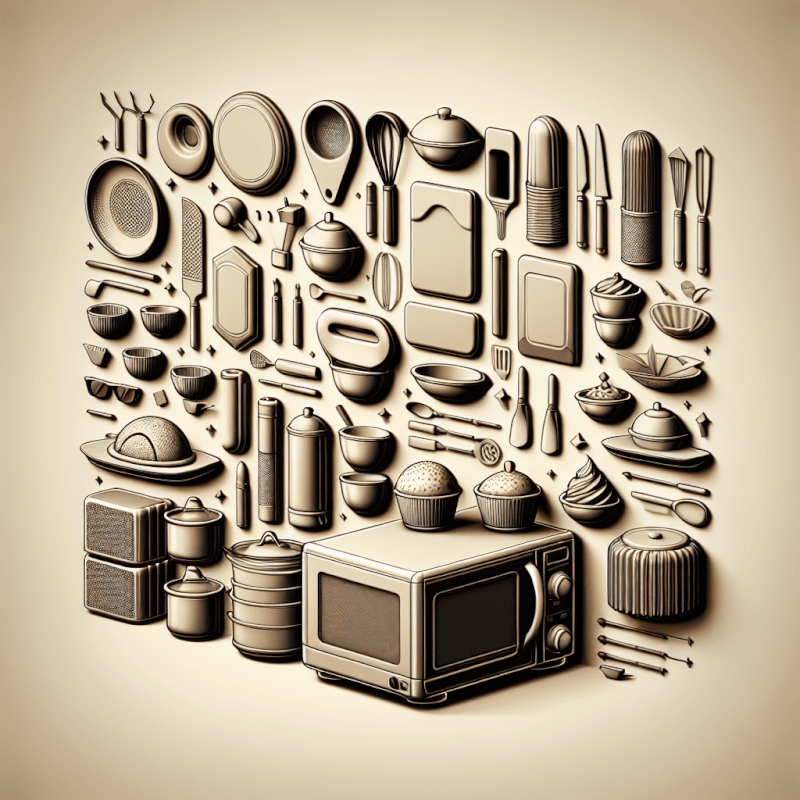
Safety precautions when using bakeware in a convection microwave
While using bakeware in a convection microwave, it is essential to prioritize safety. Follow these safety precautions to ensure a safe cooking experience:
Using oven mitts and gloves
When handling hot bakeware or removing it from the convection microwave, always use oven mitts or gloves to protect your hands from burns. Bakeware can retain heat for a significant amount of time, so exercise caution and allow it to cool before handling.
Being cautious of hot surfaces
The surfaces of bakeware and the convection microwave can become extremely hot during cooking. Avoid direct contact with these hot surfaces to prevent burns. Use oven mitts, gloves, or utensils to handle the bakeware and open the convection microwave door.
Avoiding direct contact with metal utensils
Metal utensils should not come into direct contact with the interior walls or heating elements of the convection microwave, as they can cause sparking or damage. Use heat-resistant utensils, such as silicone or wooden utensils, to handle food or stir dishes while they are cooking.
Proper ventilation and electrical safety
Ensure that the convection microwave is properly installed and has adequate ventilation to prevent overheating. Avoid placing any flammable objects on or near the convection microwave. Additionally, follow the manufacturer’s instructions for electrical safety, such as proper grounding and avoiding the use of extension cords.
Conclusion
Using bakeware in a convection microwave opens up a world of culinary possibilities, allowing you to cook a variety of dishes quickly and efficiently. By considering factors such as material, size and shape, heat resistance, ease of cleaning, and versatility, you can choose the right bakeware for your convection microwave cooking needs. With the right accessories, proper cooking techniques, and maintenance, you can enjoy delicious meals and baked goods that are evenly cooked and full of flavor. So go ahead and experiment with your convection microwave and bakeware to unleash your inner chef!


